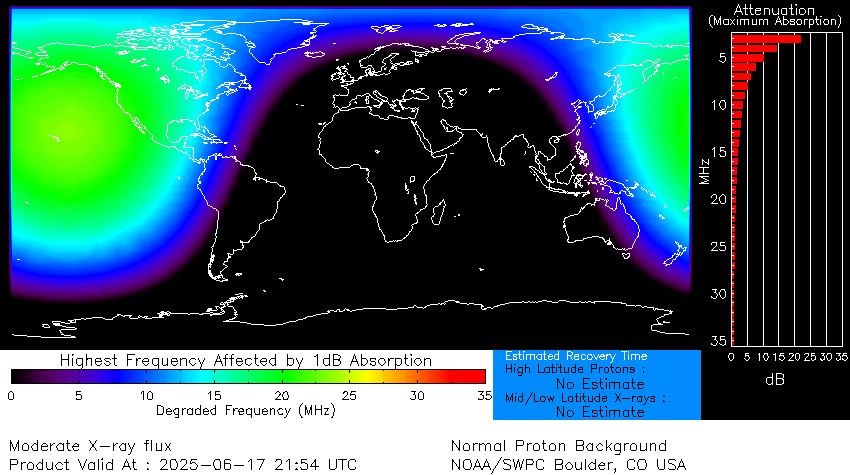Colossal solar flare erupts from Earth-facing sunspot, sparking strong radio blackouts over Pacific Ocean (video)
The prolific flare factory doesn't look like stopping anytime soon.
It's at it again!
Sunspot region 4114 has fired off its strongest blast yet — an X1.2-class solar flare that erupted on June 17, triggering radio blackouts across the Pacific Ocean region, including Hawaii.
The flare peaked at 5:54 p.m. EDT (2154 GMT), marking the first X-class flare from this active sunspot region, which has already been responsible for multiple M-class eruptions over the past few days.
Unlike previous eruptions from 4114, this powerful flare was not accompanied by a coronal mass ejection (CME) — a cloud of solar plasma and magnetic field that can travel through space and strike Earth's magnetic field, sparking auroras. Instead, this was a rapid, intense flash of electromagnetic energy, strong enough to ionize Earth's upper atmosphere and disrupt radio signals on the sunlit side of the planet.
The flare caused a shortwave radio blackout centered over the Pacific Ocean, with the strongest impact over Hawaii, according to NOAA's Space Weather Prediction Center. Ham radio operators and aviators may have noticed signal loss at frequencies below 25 MHz shortly after the flare struck, according to spaceweather.com.

X-class flares are the most powerful type of solar flare. Tuesday's event ranked as an X1.2, placing it at the lower end of the X-scale, but still strong enough to cause disruptions. For comparison, an X1 flare is 10 times more powerful than an M1, and 100 times stronger than a C1-class flare.
Forecasters are closely watching sunspot region 4114, which remains Earth-facing and shows signs of magnetic instability. This means it could still produce more high-level flares in the coming hours or days, and potentially with CMEs.
Breaking space news, the latest updates on rocket launches, skywatching events and more!
If future flares do launch CMEs toward Earth, they could trigger geomagnetic storms and even auroras. For now, space weather forecasters are keeping a close eye on this prolific flare factory.
Stay up to date with the latest space weather news and forecasts on our aurora forecast live blog and NOAA's 3-day geomagnetic outlook.
Join our Space Forums to keep talking space on the latest missions, night sky and more! And if you have a news tip, correction or comment, let us know at: community@space.com.

Daisy Dobrijevic joined Space.com in February 2022 having previously worked for our sister publication All About Space magazine as a staff writer. Before joining us, Daisy completed an editorial internship with the BBC Sky at Night Magazine and worked at the National Space Centre in Leicester, U.K., where she enjoyed communicating space science to the public. In 2021, Daisy completed a PhD in plant physiology and also holds a Master's in Environmental Science, she is currently based in Nottingham, U.K. Daisy is passionate about all things space, with a penchant for solar activity and space weather. She has a strong interest in astrotourism and loves nothing more than a good northern lights chase!
You must confirm your public display name before commenting
Please logout and then login again, you will then be prompted to enter your display name.
